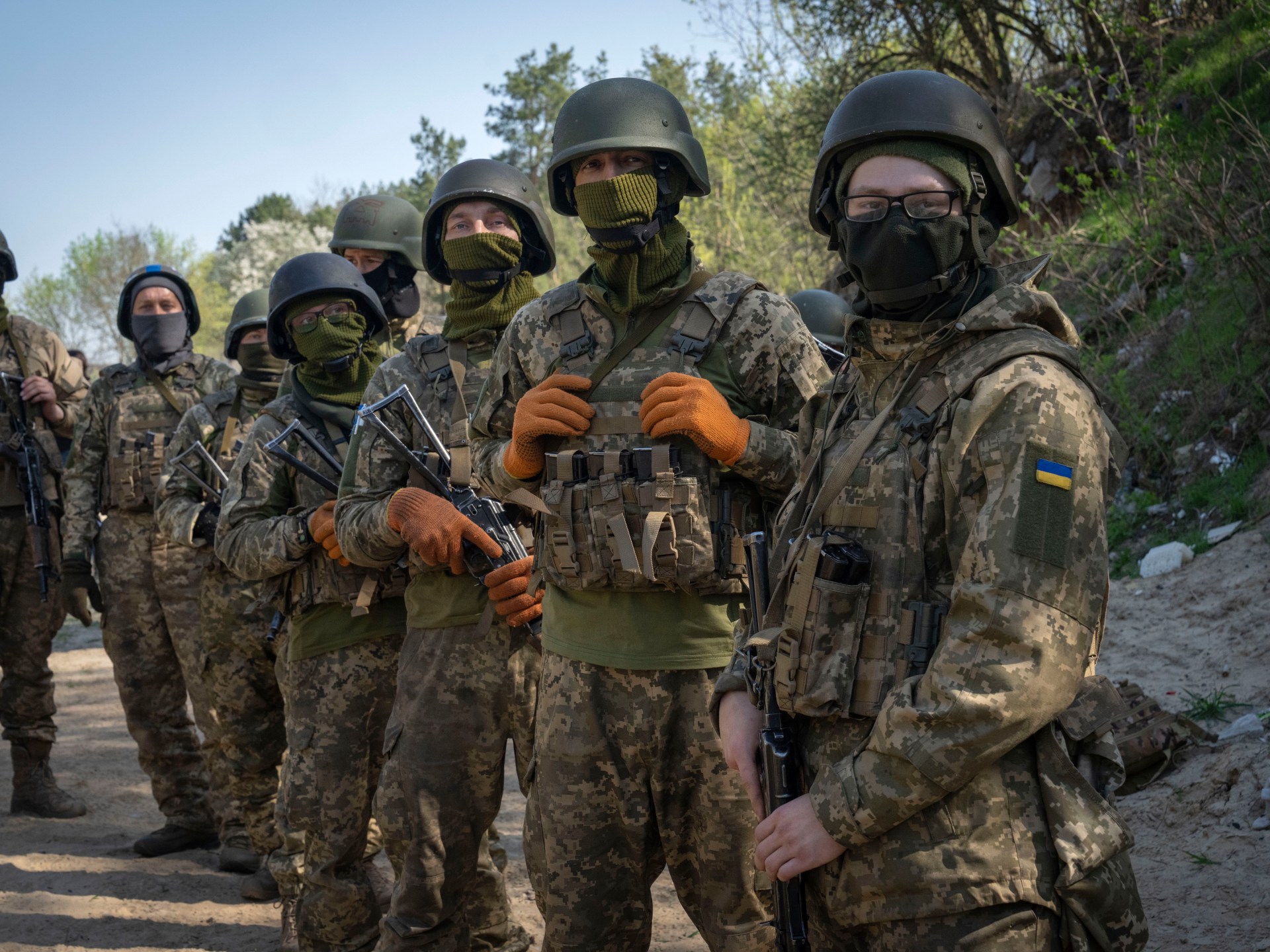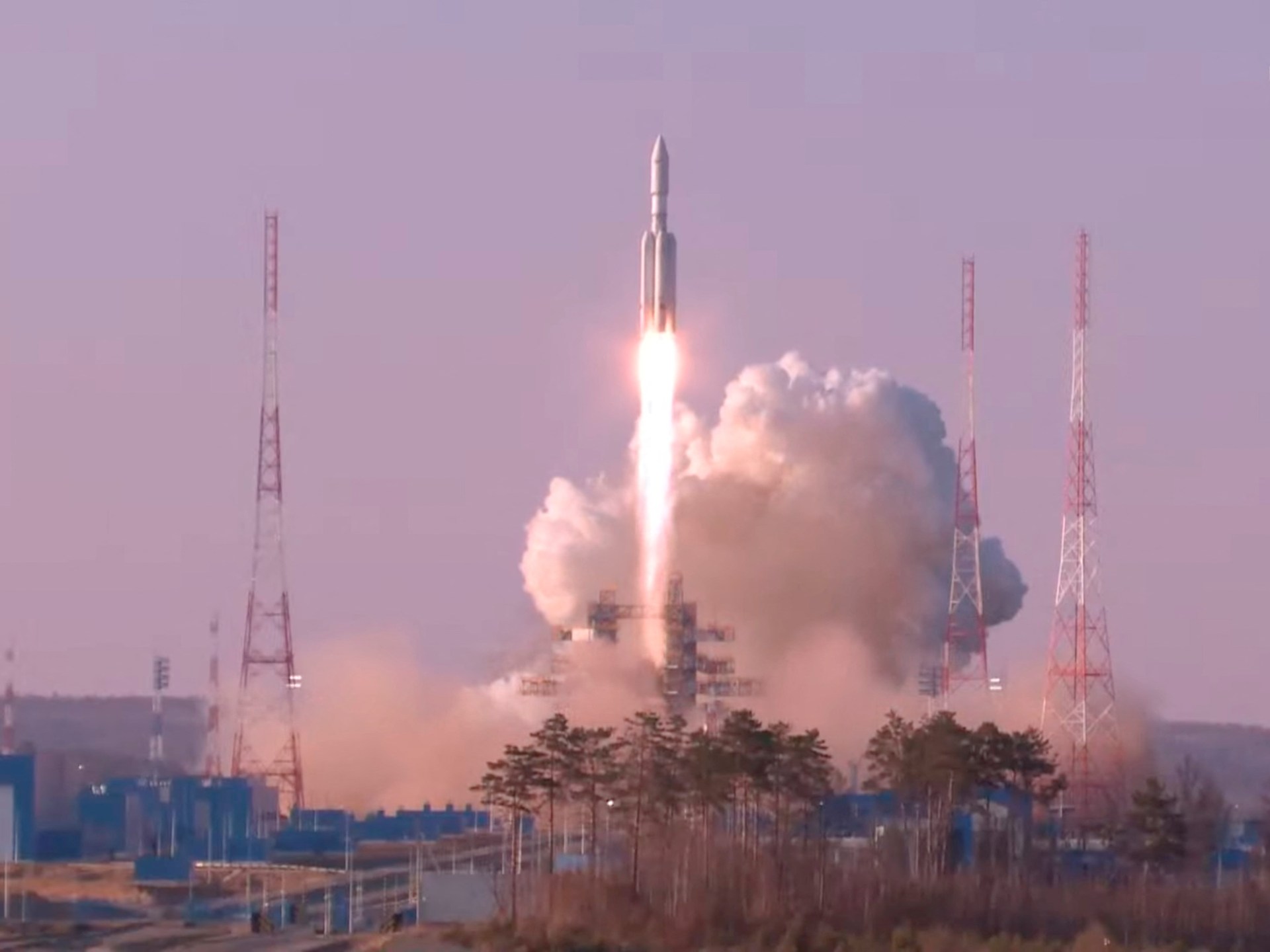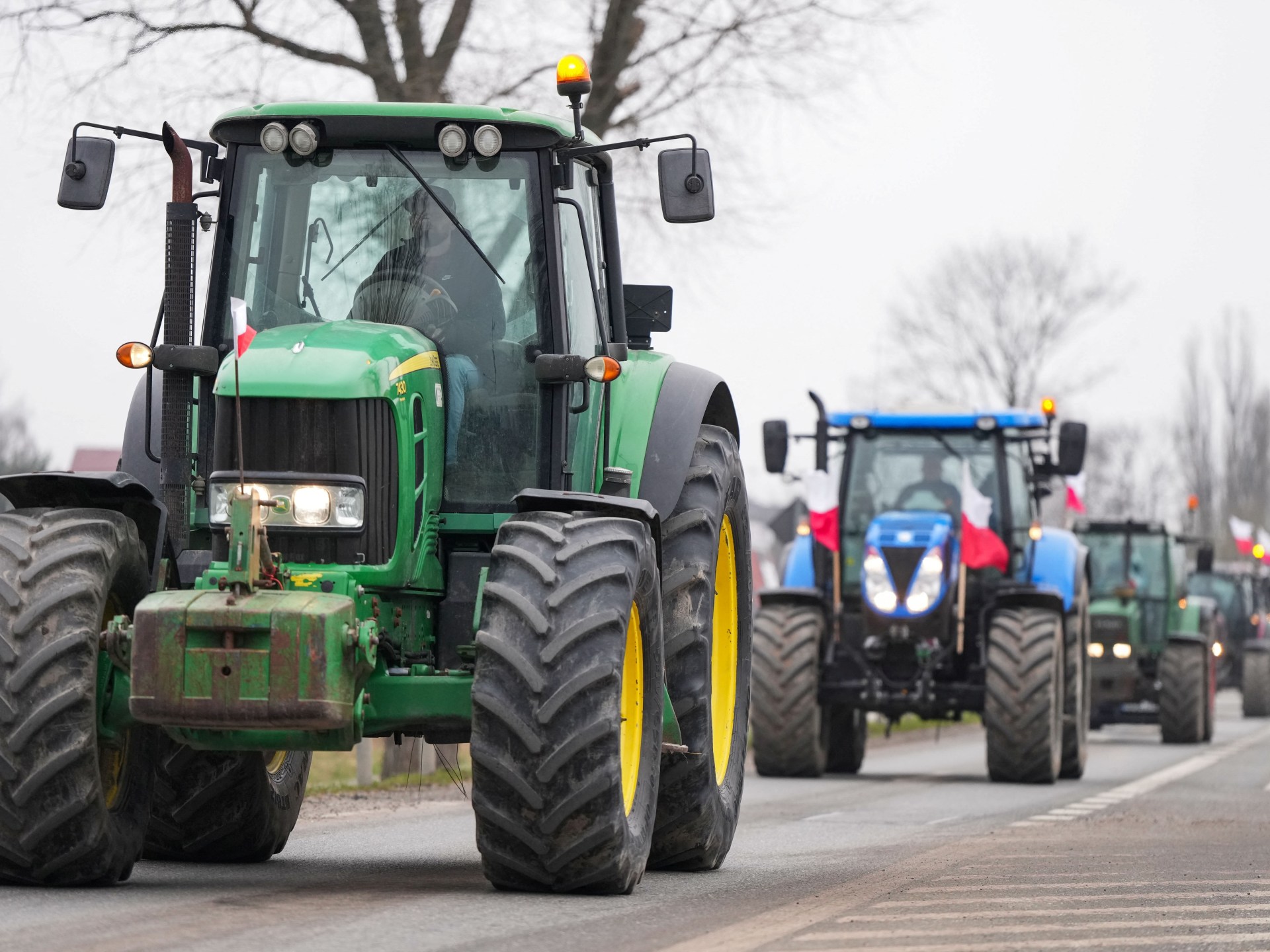World
'Very tense' situation as floods in Russia see thousands evacuated
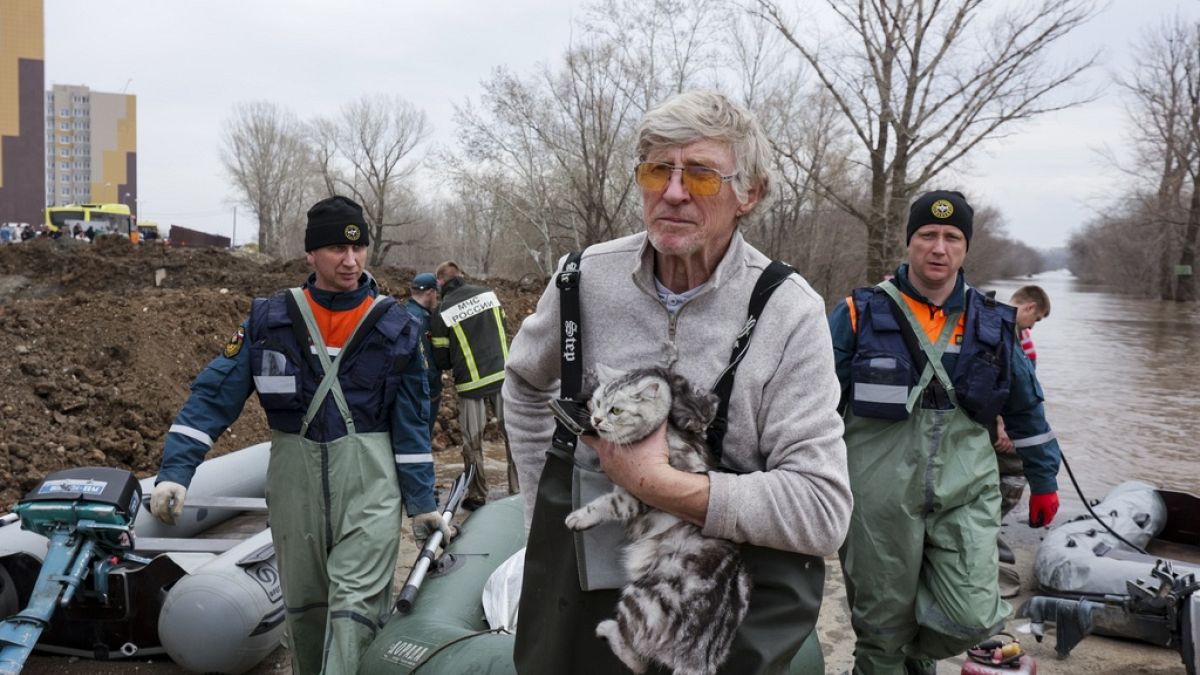
More than 100,000 people have fled their homes in Russia and neighbouring Kazakhstan.
Kremlin spokesperson Dmitry Peskov has called the situation in Russia and Kazakhstan “very, very tense” as fast-melting snow and ice swell rivers in Russia’s southern Urals and northern Kazakhstan.
Both countries have declared a state of emergency after battling the rising rivers for over five days.
Kazakhstan has evacuated 96,272 people since the start of the floods. Russia itself has evacuated more than 7,000, mostly from the Orenburg region.
The floods in Orenburg began with the collapse of a dam on Saturday. Although President Vladimir Putin is frequently shown on Russian state television meeting officials and traveling across the country, the Kremlin said he is not yet planning to visit the flood-hit region.
The river’s water level in the city of Orenburg was above 10 metres on Wednesday, state news agency Ria Novosti reported, citing the regional governor. Photos shared by Russian news outlets showed roads covered in water, submerged fields and partially submerged houses.
The water was approaching high-rise buildings, Ria Novosti said, and more than 300 homes were flooded overnight, according to state news agency Tass.
People in the city of Orsk gathered in a rare protest Monday, calling for compensation after their homes were damaged. Protests are unusual in Russia, where authorities have consistently cracked down on any form of dissent following Putin’s invasion of Ukraine.
Hundreds of people gathered in front of the administrative building in Orsk on Monday, and videos posted on Russian social media showed people chanting “Putin, help us!” and “Shame!”
Other videos on social media showed angry Russians refusing to leave the areas near their homes because they said thieves were looting abandoned houses with boats.
A criminal probe has been launched to investigate suspected construction violations that may have caused the dam to break. Local authorities said the dam could withstand water levels up to 5.5 metres. On Sunday, the level in Orsk reached 9.7 meters, according to Russia’s water level information site AllRivers.
The Ural River, about 2,428 kilometres long, flows from the southern section of the Ural Mountains into the north end of the Caspian Sea, through Russia and Kazakhstan.

World
Strack-Zimmermann blasts von der Leyen's defence policy

Marie-Agnes Strack-Zimmermann, one of the lead candidates in the European elections, has issued a blistering verdict of Ursula von der Leyen’s first term in office.
Strack-Zimmermann, who hails from the Alliance of Liberals and Democrats for Europe (ALDE), is part of a three-candidate team representing the liberal forces in the bloc-wide poll between 6 and 9 June. Currently a member of the Bundestag, where she chairs the Defence Committee, she is vying for a seat in the European Parliament.
In a wide-ranging interview with Euronews, the contender denounced the policies of Ursula von der Leyen, the sitting president of the European Commission, in the fields of defence, economy and fundamental rights. Von der Leyen is running for a second mandate and is widely considered the frontrunner.
“I’m absolutely disappointed,” Strack-Zimmermann said on Monday, speaking in Maastricht hours before a debate with all lead candidates.
The liberal assailed the incumbent for taking too long to put defence at the very top of the EU agenda, only doing so, she said, after Russian troops broke through the borders of Ukraine and unleashed the largest armed conflict in the continent since World War II.
The wait, she added, was particularly striking considering von der Leyen had previously served as defence minister under the government of Chancellor Angela Merkel.
“I have no idea why she didn’t talk about military security when she started to be the president of the Commission because she knows the topic, she has an idea of what happened,” she said, referring to the 2014 annexation of Crimea.
“I was surprised that didn’t say: ‘Come on, we have to do more in Europe,’ because she has the experience.”
When Russia’s invasion began in February 2022, von der Leyen’s executive was still dealing with the shockwaves sent by the COVID-19 pandemic and the roll-out of the recovery fund, built up by record-breaking amounts of joint borrowing and beefed up with stringent spending conditions to accelerate the green and digital transitions.
But in Strack-Zimmermann’s view, this does not cut it as an excuse for procrastination.
“I know the pandemic situation was terrible for everybody. But even then, you could see what (was happening) in Russia. And it was not this or that, it was both. I think if you are the head of the Commission, there is not one (single) topic,” she told Euronews.
“It’s not a very sexy topic talking about weapons, talking about war. It sounds nicer if you are talking about the Green Deal, it’s a softer topic.”
The failure to provide 1 million rounds of artillery shells by March 2024, as the bloc famously promised to Kyiv, underlines the overall fiasco, she added. “It’s a question of time. It’s a question (of) if you say we will deliver it, we have to do it.”
On the economic front, the contender warned environmental policies and excessive bureaucracy put a damper on growth, scared entrepreneurs away and killed “every moment to have ideas to stay in Europe as a company.”
Regarding the protection of fundamental rights, Strack-Zimmermann said it was “unbelievable” that the Commission had unfrozen €10.2 billion in cohesion funds for Hungary one day before a crucial summit that Viktor Orbán had threatened to blow up.
Brussels argued the release was inevitable after Budapest approved a reform to address long-standing concerns about judicial independence. But the overhaul was deemed insufficient by the European Parliament, which filed a lawsuit against the Commission.
“Everybody was very irritated,” Strack-Zimmermann said. “She’s responsible for it. And you could see that the Parliament is not amused about this situation.”
Despite her harsh assessment, the liberal admitted that being a Commission president was a “hard job.”
This interview is part of an ongoing series with all the Spitzenkandidaten. The full interview with Strack-Zimmermann will air on Euronews over the weekend.
World
US to require automatic emergency braking on new vehicles in 5 years and set performance standards
DETROIT (AP) — In the not-too-distant future, automatic emergency braking will have to come standard on all new passenger vehicles in the United States, a requirement that the government says will save hundreds of lives and prevent thousands of injuries every year.
The National Highway Traffic Safety Administration unveiled the final version of the new regulation on Monday and called it the most significant safety rule in the past two decades. It’s designed to prevent many rear-end and pedestrian collisions and reduce the roughly 40,000 traffic deaths that happen each year.
“We’re living through a crisis in roadway deaths,” Transportation Secretary Pete Buttigieg said in an interview. “So we need to do something about it.”
It’s the U.S. government’s first attempt to regulate automated driving functions and is likely to help curb some of the problems that have surfaced with driver-assist and fully automated driving systems.
Although about 90% of new vehicles have the automatic braking standard now under a voluntary agreement with automakers, at present there are no performance requirements, so some systems are may not be that effective. The new regulations set standards for vehicles to automatically stop and avoid hitting other vehicles or pedestrians, even at night.
“Part of how I think we’re going to turn the corner on the unacceptable level of roadway deaths that we just lived with for my entire lifetime is through these kinds of technologies,” said Buttigieg, who is 42. “We need to make sure we set high performance standards.”
The regulation, which will require additional engineering to bolster software and possibly add hardware such as radar, won’t go into effect for more than five years. That will give automakers time to bolster their systems during the normal model update cycle, NHTSA said.
It also will drive up prices, which NHTSA estimates at $354 million per year in 2020 dollars, or $82 per vehicle. But Buttigieg said it will save 362 lives per year, prevent about 24,000 injuries and save billions in property damage.
Critics say the standards should have come sooner, and that they don’t appear to require that the systems spot people on bicycles, scooters or other vulnerable people.
The new rule requires all passenger vehicles weighing 10,000 pounds (4,500 kilograms) or less to have forward collision warning, automatic emergency braking and pedestrian detection braking.
The standards require vehicles to stop and avoid hitting a vehicle in front of them at speeds up to 62 miles per hour (100 kilometers per hour). Also they must apply the brakes automatically at up to 90 mph (145 kph) if a collision with vehicle ahead is imminent.
The systems also have to spot pedestrians during the day and night, and must stop and avoid a pedestrian at 31 mph to 40 mph (50 kph to 64 kph) depending on the pedestrian’s location and movement.
The agency said that in 2019, nearly 2.2 million rear-end crashes were reported to police nationwide, killing 1,798 people and injuring 574,000 others. Sixty percent of fatal rear-end crashes and 73% of injury crashes were on roads with speed limits of 60 mph (97 kph) or below.
In addition, there were 6,272 pedestrians killed in crashes, with 65% of those people being hit by the front of a passenger vehicle.
The vast majority of deaths, injuries and property damage happens at speeds above 25 mph (40 kph), speeds that are not covered by the voluntary agreement, the agency said.
“Only regulation can ensure that all vehicles are equipped with AEB (automatic emergency braking) that meet minimum performance requirements,” the regulation says.
NHTSA would conduct random tests to determine whether automakers are meeting the standards.
The agency said it isn’t requiring what type of sensors each automaker must have to meet the requirements. That’s up to the automakers. But in testing of 17 vehicles, only one — a 2023 Toyota Corolla equipped with cameras and radar — met the standards.
The regulation said radar would have to be added to about 5% of the systems in order to comply with the requirements.
Cathy Chase, president of Advocates for Highway and Auto Safety, said the new standards will make it clear to car buyers that AEB will work properly. Most consumers, she said, are unaware that there are no requirements in place now.
“By and large, it’s better to have AEB than not have AEB,” she said. “So once the AEB rule is put into place, once again the federal government will be doing its job and protecting consumers.”
NHTSA said it changed its original proposal, giving automakers more than five years to meet the standards instead of three. Chase said shorter would be better.
“The shorter the timeline, the more people are going to be saved, the quicker these are going to get into cars and our roadways are going to be safer for everyone,” she said.
Chase said she is not pleased that the rule does not appear to include standards for bicyclists or people using scooters.
World
Funeral services are held for a Chicago police officer fatally shot while heading home from work
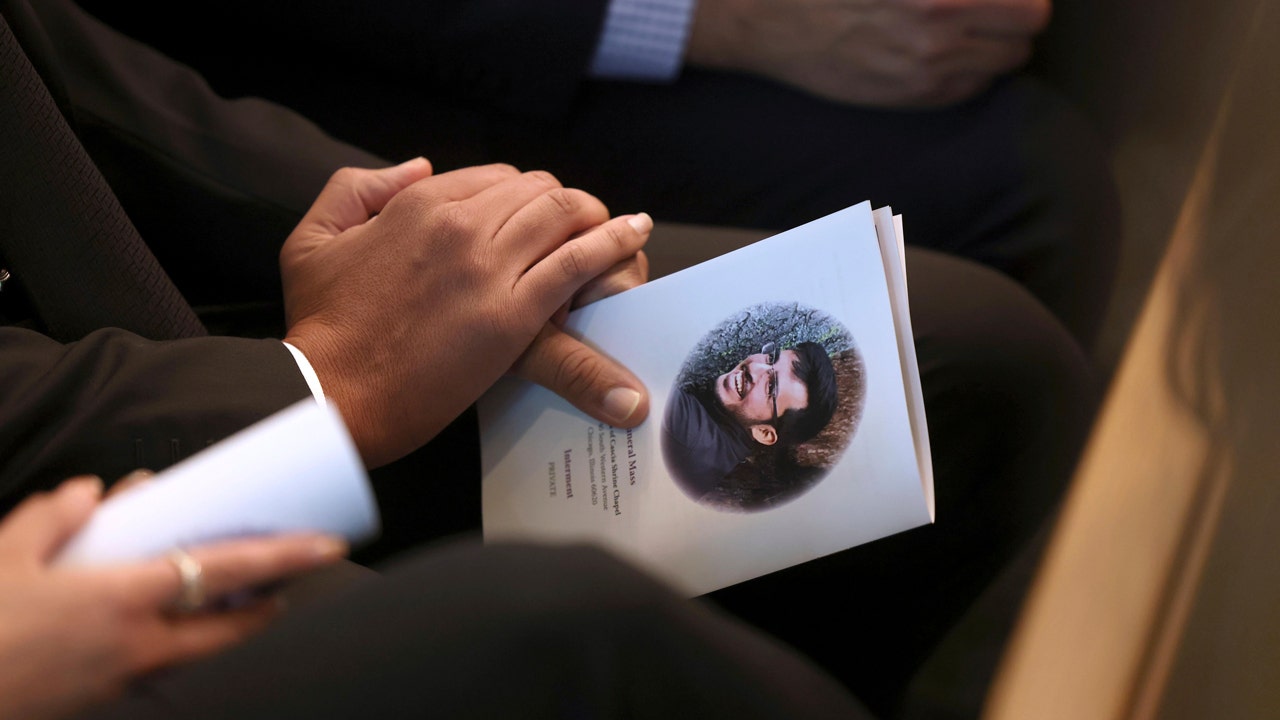
Hundreds of mourners lined the streets Monday to say farewell to a Chicago police officer who was shot to death while off-duty and heading home from work.
Police officers, firefighters and others gathered along the funeral procession route to St. Rita of Cascia Shrine Chapel in Chicago to remember 30-year-old officer Luis M. Huesca. The six-year veteran of the police department was just two days shy of his 31st birthday when he was slain.
CHICAGO POLICE ID SUSPECT WANTED IN MURDER OF OFFICER LUIS HUESCA, OFFER $100K REWARD
Huesca was shot multiple times shortly before 3 a.m. on April 21 on the city’s Southwest Side. He was pronounced dead at a hospital.
The funeral program for Chicago police Officer Luis M. Huesca on April 29, 2024 at St. Rita of Cascia Shrine Chapel. Hundreds of mourners lined the streets to say farewell to the police officer who was shot to death while off-duty and heading home from work. (Antonio Perez/Chicago Tribune via AP)
Huesca was in uniform but wearing something on top of the uniform to cover it as is customary for off-duty officers, Superintendent Larry Snelling said.
Police have said that officers responded to a gunshot detection alert and found the officer outside with gunshot wounds. His vehicle was taken, but police have not confirmed whether the shooting was part of a carjacking.
An arrest warrant was issued last week for a 22-year-old man suspected in the shooting. The Associated Press is not naming the suspect because he has yet to be captured and arraigned.
Police have said the man should be considered armed and dangerous.
Chicago Mayor Brandon Johnson’s schedule released Sunday night said he would attend Huesca’s funeral but an update sent to reporters Monday morning said he would not be present.
The change came after Illinois Comptroller Susana Mendoza, a Democrat, said in an early Monday morning post on the social platform X that the officer’s mother asked Mendoza to tell Johnson he was “unwelcome” at the funeral. Mendoza said she and state Rep. Angelica Guerrero-Cuellar, also a Democrat, called Johnson on Sunday night to pass on the message.
“We continue to send our deepest condolences to the family and colleagues of Officer Luis Huesca as they heal from the loss of their beloved son, nephew, brother and friend,” Johnson said in a written statement Monday morning. “As mayor, I vow to continue supporting our police and first responders, uniting our city and remaining committed to working with everyone towards building a better, stronger, safer Chicago.”
Huesca was friends with Chicago police officer Andrés Vásquez Lasso who was slain in March 2023 during a shootout after responding to a domestic violence call. Huesca had honored Vásquez Lasso in a video.
Fellow officer Lucia Chavez said during Monday’s service that she was friends with Vásquez Lasso and Huesca.
“When we were at the academy, I remember … that during our training the instructor said ‘this uniform makes us family. If one fell, we all fell,’” Chavez said. “I didn’t understand that. Now, I do. I lost Andrés first. And now, Luis. I lost my two classmates, my best friends, my brothers. The violence in this city took them away from me, from us.”
Snelling, the superintendent, said Huesca “left an impression.”
“He was always trying to leave things better than he found them,” Snelling said. “The protection of others is what he wanted every single day.”
Huesca was born in Chicago’s Avondale community. He earned his bachelor’s degree in business administration at the University of Illinois at Chicago, according to his obituary.
He is survived by his parents, Emiliano and Edith Huesca; a sister, Liliana O’Brien; and a brother, Emiliano Huesca Jr.
-

 World1 week ago
World1 week agoShipping firms plead for UN help amid escalating Middle East conflict
-

 Politics1 week ago
Politics1 week agoICE chief says this foreign adversary isn’t taking back its illegal immigrants
-

 Politics1 week ago
Politics1 week ago'Nothing more backwards' than US funding Ukraine border security but not our own, conservatives say
-

 News1 week ago
News1 week agoThe San Francisco Zoo will receive a pair of pandas from China
-

 World1 week ago
World1 week agoTwo Mexican mayoral contenders found dead on same day
-

 World1 week ago
World1 week agoBrussels, my love? The EU single market is not sexy enough for voters
-

 Politics1 week ago
Politics1 week agoRepublican aims to break decades long Senate election losing streak in this blue state
-

 World1 week ago
World1 week agoEU sanctions extremist Israeli settlers over violence in the West Bank



